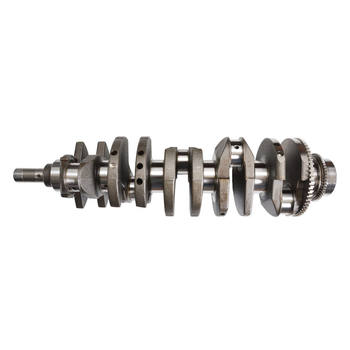Why Crankshaft Installation and Alignment Matter
Have you ever wondered what makes your car's engine purr like a well-fed kitten? Well, it all comes down to the crankshaft. In my experience, understanding crankshaft installation and alignment can be a game-changer when it comes to engine repair.
The Role of the Crankshaft
Interestingly enough, the crankshaft is responsible for converting the linear motion of the pistons into rotational motion. This process propels your car forward and gives it that satisfying hum.
Preparing for Crankshaft Installation
Before diving into the installation process, there are a few crucial steps to ensure everything goes smoothly. First and foremost, clean the engine block thoroughly. Any debris or dirt could potentially damage the crankshaft bearings.
Installing the Main Bearing Shells
Now that your engine block is squeaky clean, it's time to install the main bearing shells. These bearings support the crankshaft and allow it to rotate smoothly. Be sure to follow the manufacturer's guidelines for proper installation.
Installing the Crankshaft
With the main bearing shells in place, you're ready to install the crankshaft. Gently lower it into position, taking care to avoid damaging the bearings. It's important to ensure the crankshaft is properly seated and aligned before moving on to the next step.
Aligning the Crankshaft
To align the crankshaft, many experts recommend using a dial indicator. This handy tool helps measure the endplay, which is the amount of movement between the crankshaft and main bearings. The goal is to achieve the perfect balance – not too tight, not too loose.
Tips for Successful Crankshaft Alignment
Here are a few expert tips for achieving optimal crankshaft alignment:
- Use a high-quality torque wrench to tighten the main bearing caps
- Check the endplay multiple times throughout the process
- Consult the manufacturer's specifications for the ideal endplay measurement
Double-Checking Your Work
As it turns out, a successful crankshaft installation and alignment job relies heavily on double-checking your work. Once you've achieved the desired endplay, take the time to re-check all your measurements and tighten any bolts as needed.
Final Thoughts
In conclusion, mastering crankshaft installation and alignment can significantly improve your engine repair skills. By following these steps and taking the time to double-check your work, you'll be well on your way to a smoother, quieter, and more efficient engine.
Next Steps
Ready to put your newfound knowledge into practice? Gather your tools, find a clean workspace, and dive into your next engine repair project. And remember, practice makes perfect – so don't be discouraged if things don't go perfectly the first time around.




